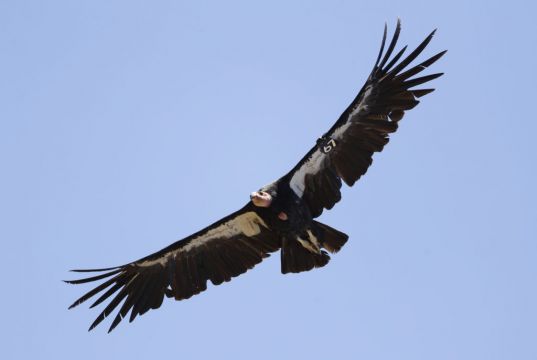Endangered California condors can have “virgin births”, according to a new study.
Researchers at the San Diego Zoo Wildlife Alliance said genetic testing confirmed that two male chicks hatched in 2001 and 2009 from unfertilised eggs were only related to their mothers. Neither was related to a male.
The study, published in the the Journal of Heredity, is the first report of asexual reproduction in California condors, although parthenogenesis can occur in other species ranging from sharks to honey bees to Komodo dragons.
In birds, the phenomenon usually only occurs when females do not have access to males.
In this case, each mother condor had previously bred with males, producing 34 chicks, and each was housed with a fertile male at the time they produced the eggs through parthenogenesis.
The researchers said they believe it is the first case of asexual reproduction in any avian species where the female had access to a mate.
Oliver Ryder, the study’s co-author and director of conservation genetics for the San Diego Zoo Wildlife Alliance, said: “These findings now raise questions about whether this might occur undetected in other species.”
The non-profit alliance runs the San Diego Zoo and Safari Park and has been involved in a California condor breeding programme that helped bring the giant vultures back from near-extinction.
🚨BREAKING NEWS🚨
Scientists at SDZWA discovered two California condor chicks have hatched from unfertilized eggs. This sort of asexual reproduction, known as parthenogenesis, is a first for the species and provides new hope for their recovery. Read more: https://t.co/m5MZhqt21l pic.twitter.com/vRxGbKZy2S— San Diego Zoo Wildlife Alliance (@sandiegozoo) October 28, 2021
Advertisement
With 10ft wingspans, California condors are the largest flying birds in North America.
They once ranged throughout the West Coast, but only 22 survived in the 1980s when the US government captured them and placed them in zoos for captive breeding.
About 160 were bred at the San Diego Zoo and Safari Park.
There are now more than 500 California condors, including more than 300 that have been released into the wild in California, Arizona, Utah and Mexico.
The asexual reproduction was discovered some years ago during widespread testing of genetic material collected over decades from condors, both living and dead, in breeding programmes and in the wild.
“Among 467 male California condors tested in the parentage analysis, no male qualified as a potential sire” of the two birds, the study said.
California condors can live up to 60 years, but both the male birds who were studied were sickly. One was less than two years old when it died, and the other lived less than eight years.







